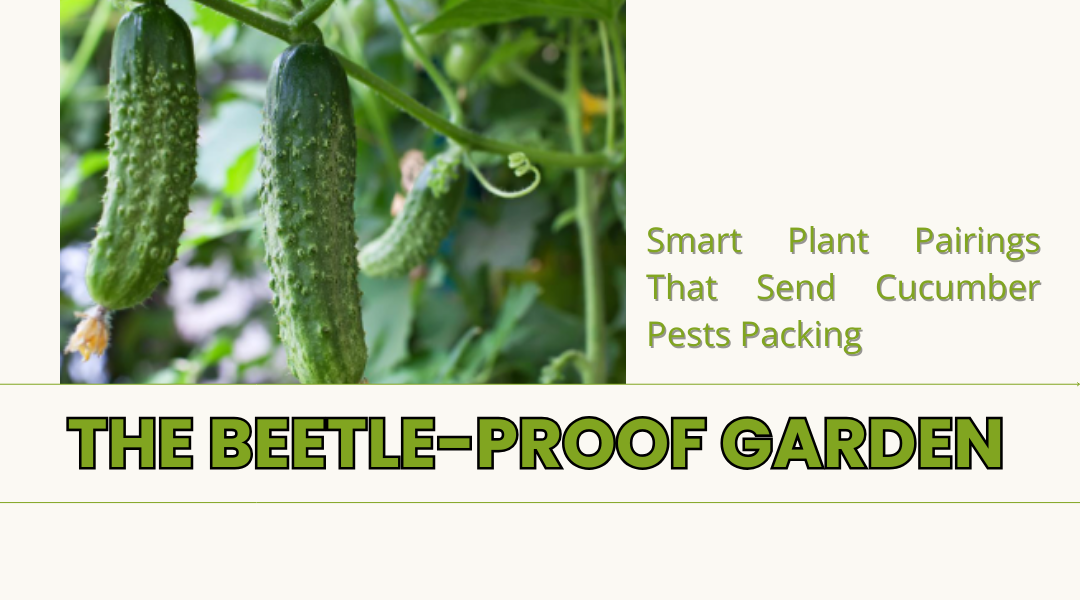Cucumber beetles are the obnoxious party crashers of the vegetable garden. They’ll skeletonize your squash leaves, scar your melons, and spread disease like bad gossip. But what if you could keep them away without a single spray bottle? Enter nature’s own pest control: companion plants that act like bouncers for your precious cucurbits.
Why Companions Work (It’s Not Just Folklore)
These plants don’t just occupy space—they wage chemical warfare. Some emit scents that mask your cucumbers’ delicious (to beetles) aroma. Others exude root compounds that make the soil downright inhospitable to beetle larvae. A few even recruit bodyguards in the form of predatory insects. Here’s your hit list:
The Heavy Hitters
- French Marigolds – Not your grandma’s bedding plants. These orange firecrackers release limonene, a compound that makes beetles recoil. Pro tip: Plant ‘Durango’ or ‘Nemagold’ varieties—they’re the most potent.
- Nasturtiums – The Trojan horse of pest control. Their peppery scent repels beetles, while their sprawling vines lure aphids away from your cukes. Bonus: The flowers are edible (and delicious in salads).
- Radishes – A sneaky underground defense. When interplanted with cucumbers, their pungent roots deter soil-dwelling beetle larvae. Harvest them early to avoid competing for space.
The Aromatic Brigade
- Tansy – A medieval pest deterrent that’s making a comeback. Its camphor-like smell drives beetles nuts, but beware—it spreads aggressively. Contain it in pots near cucumber trellises.
- Catnip – It’s not just for felines. Studies show it’s 10x more effective than DEET at repelling certain beetles. Crush leaves occasionally to boost the scent.
- Dill – The double agent. Its ferny foliage confuses beetles, while its yellow umbels attract parasitic wasps that love beetle larvae for breakfast.
The Mediterranean Shield
- Oregano & Thyme – These kitchen herbs aren’t just for pizza. Their essential oils create an invisible force field. Plant them as a living border—the more you brush against them, the stronger the scent barrier.
- Tarragon – The French secret weapon. Its anise-like aroma masks cucumber smells beautifully. Pro move: Make tarragon vinegar from your harvest to dress beetle-free salads.
The Controversial Guardian
- Rue – Handle with care (literally—wear gloves). This ancient herb’s blue-green leaves emit a bitter odor beetles hate, but it can irritate skin. Ideal for perimeter planting.
Real-World Hack from the Trenches
Last season, a market gardener in Kentucky swears by her “sacrificial blue hubbard squash” tactic: She plants these at the garden’s edge. The beetles swarm them, leaving her cucumbers relatively untouched. Meanwhile, her marigold-dill-thyme trio handles the stragglers.
Key Move: Don’t just dot these plants around—create barriers.
For example:
- Edge beds with marigolds + thyme
- Train cucumbers up trellises with nasturtiums at the base
- Tuck radishes between hills of melons
Remember: Diversity is your ally. The more varied your plantings, the harder it is for beetles to lock onto their target. And unlike pesticides, this strategy gets stronger each year as beneficial insects move in permanently.
